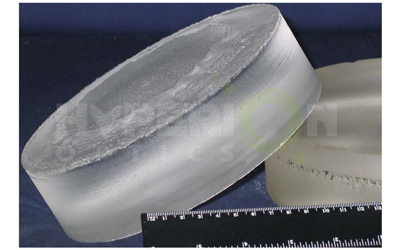As an excellent optical lens, the sapphire lens has good transmittance in the ultraviolet, infrared, and visible light bands, which can meet the requirements of multi-mode composite guidance. At the same time, the sapphire filter has excellent mechanical properties, chemical stability, high-temperature resistance, high strength, and high hardness, which can simultaneously meet the demanding requirements of hypersonic missiles for wave-transmitting plates.
In terms of preparation, sapphire can produce filters and then process them into shapes. The performance of the finished product is the same as that of the filters. Other tablets are mainly formed by powder hot press casting and sintering, and their performance is slightly lower than the original ones. Therefore, sapphire lenses have become excellent choices for high-speed fighter jets and missiles in advanced countries.
Sapphire is an extremely ideal multi-spectral wide-band window material. Compared with ordinary wide-band window materials, it has many excellent mechanical and optical properties and is suitable for laser instruments, optoelectronic devices, window materials, etc.
1. High mechanical strength: the infrared transparent window must have high strength to withstand the decompression load during high-speed movement;
2. Good thermal stability: The infrared transparent window should be able to withstand the temperature impact caused by aerodynamic heating and height changes, and the transmittance and refractive index should not change significantly with the change of temperature;
3. Good chemical stability: the infrared transparent window should be able to prevent the corrosion of the salt solution or corrosive gas in the atmosphere when exposed to the air, and it is not easy to deliquesce.
4. High optical transmittance: It must be able to effectively transmit ultraviolet to mid-infrared radiation.
5. Good optical properties, small optical scattering, and good uniformity of refractive index;
6. It can meet the requirements of large-size windows.


 Call us on:
Call us on:  Email us:
Email us:  R&D Center: Aoti Street #68 Building 4A 405 International R&D park, Nanjing
R&D Center: Aoti Street #68 Building 4A 405 International R&D park, Nanjing









 English
English  cn
cn  de
de  es
es  fr
fr 


